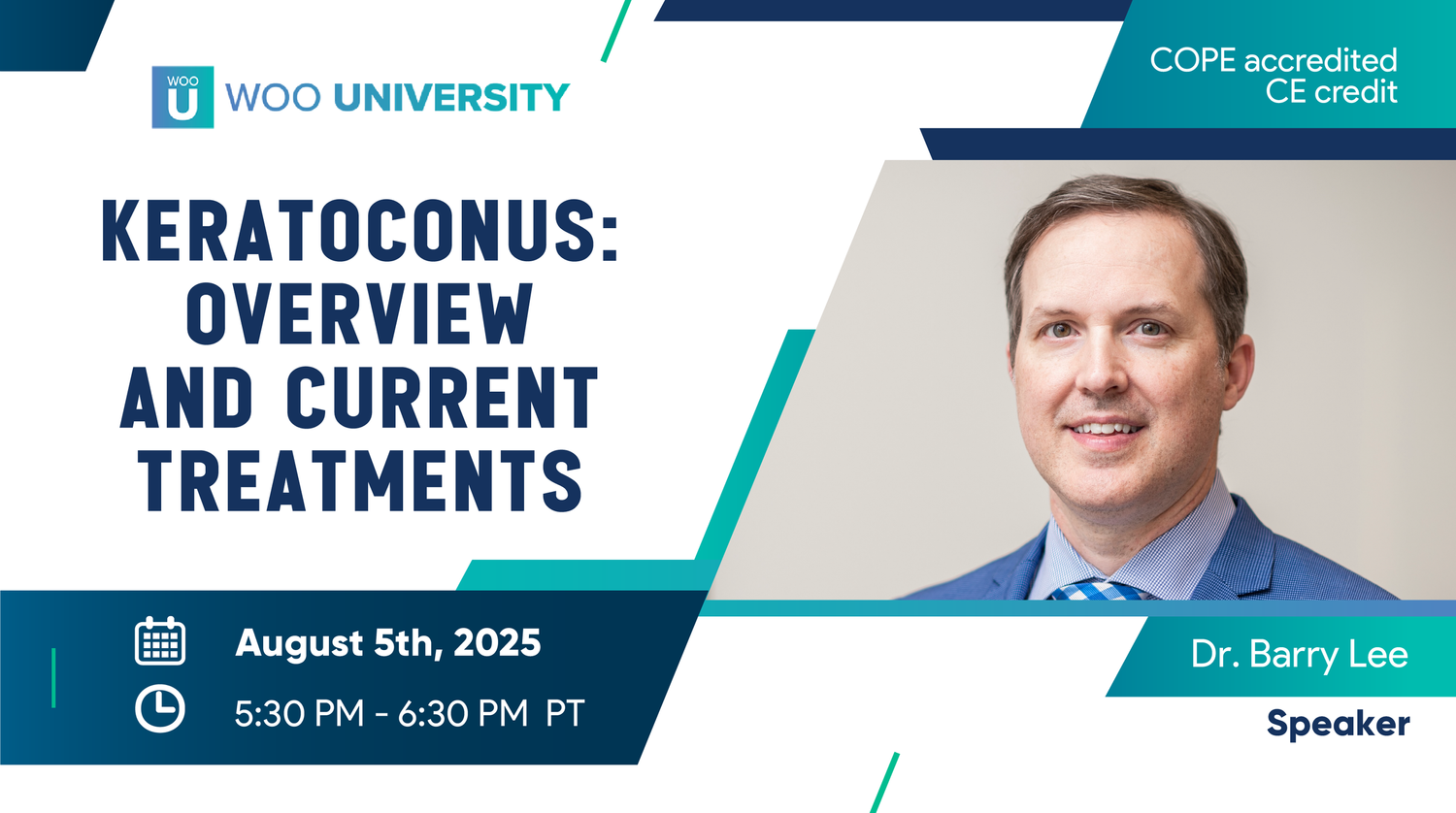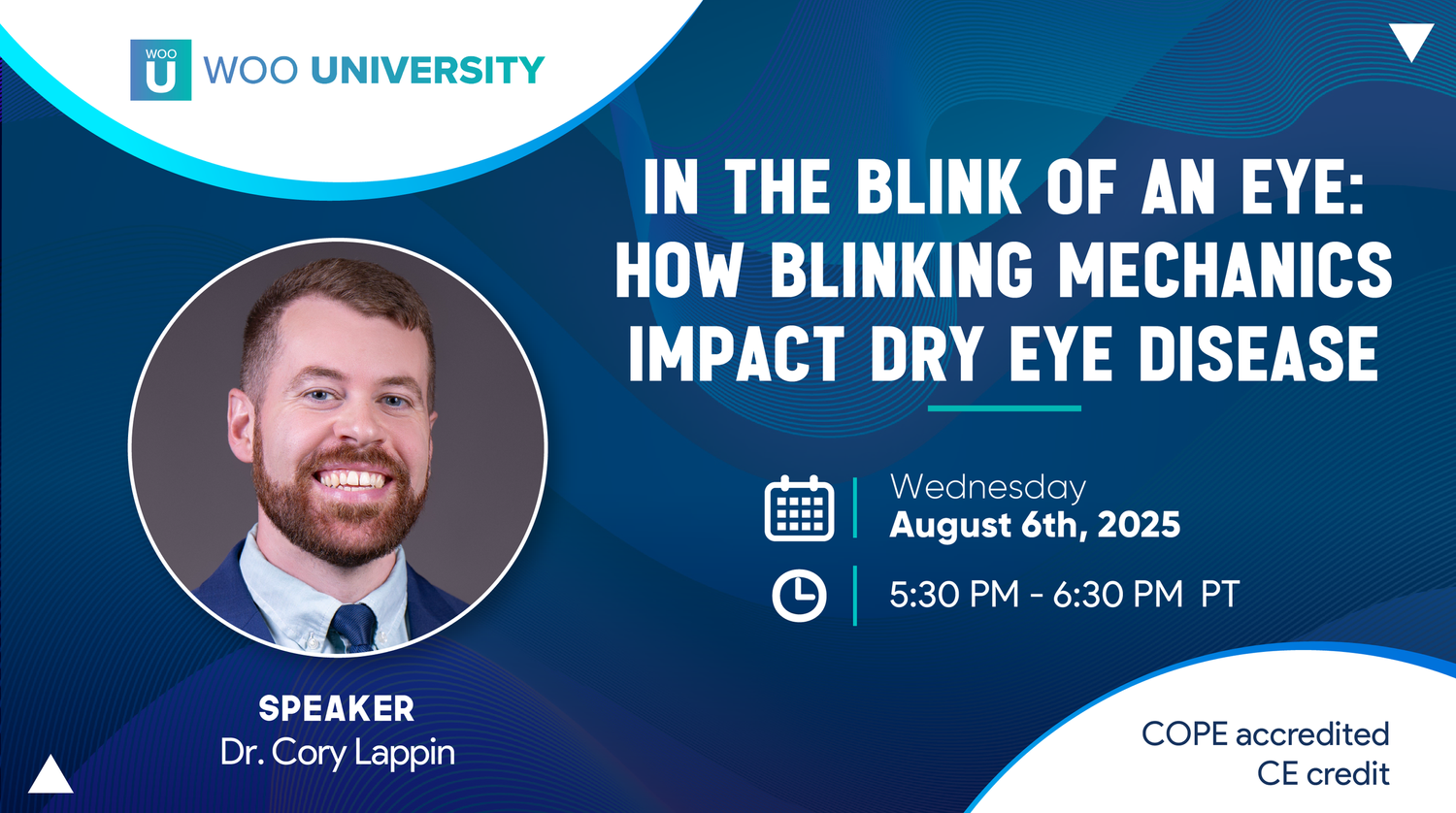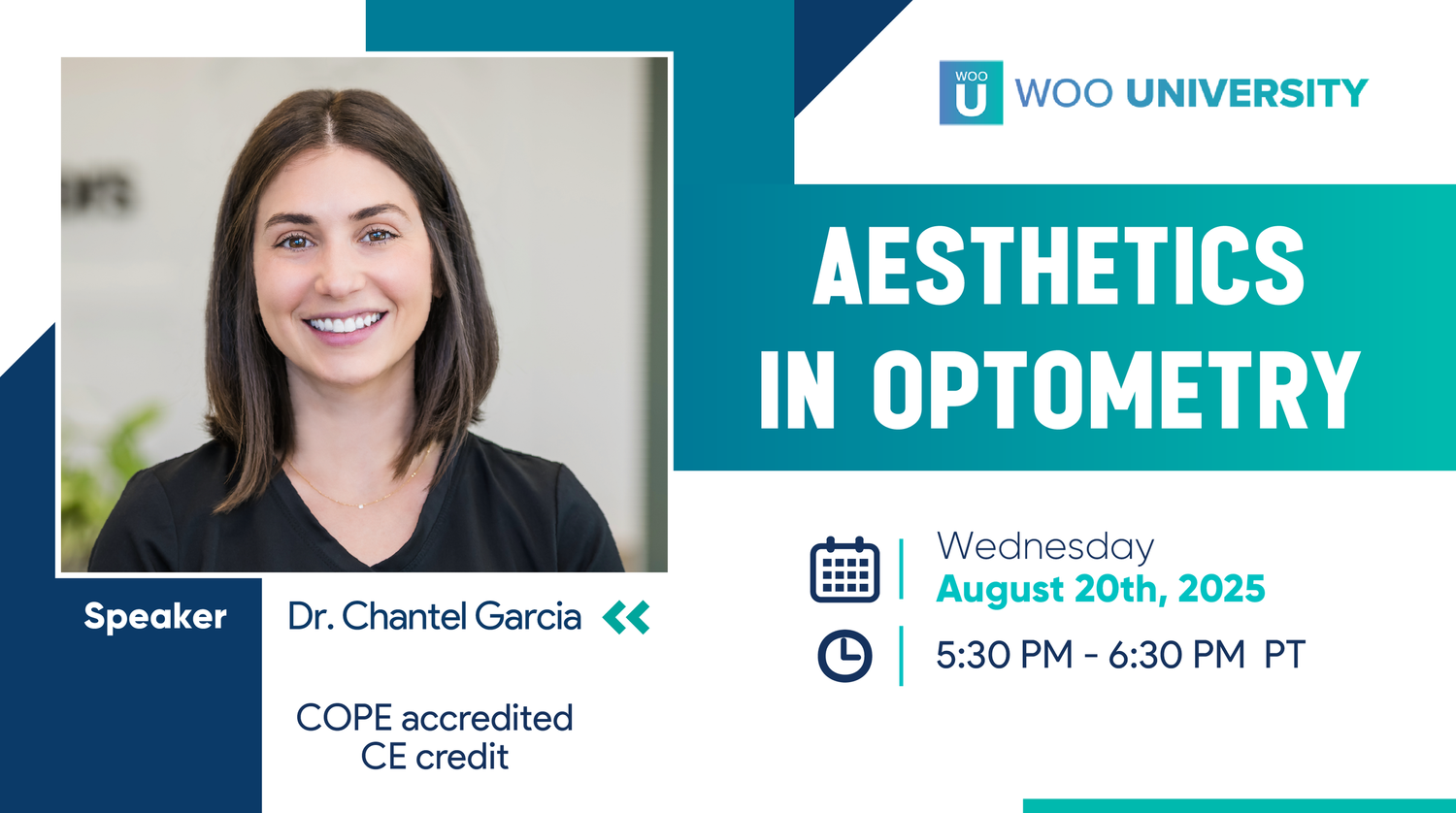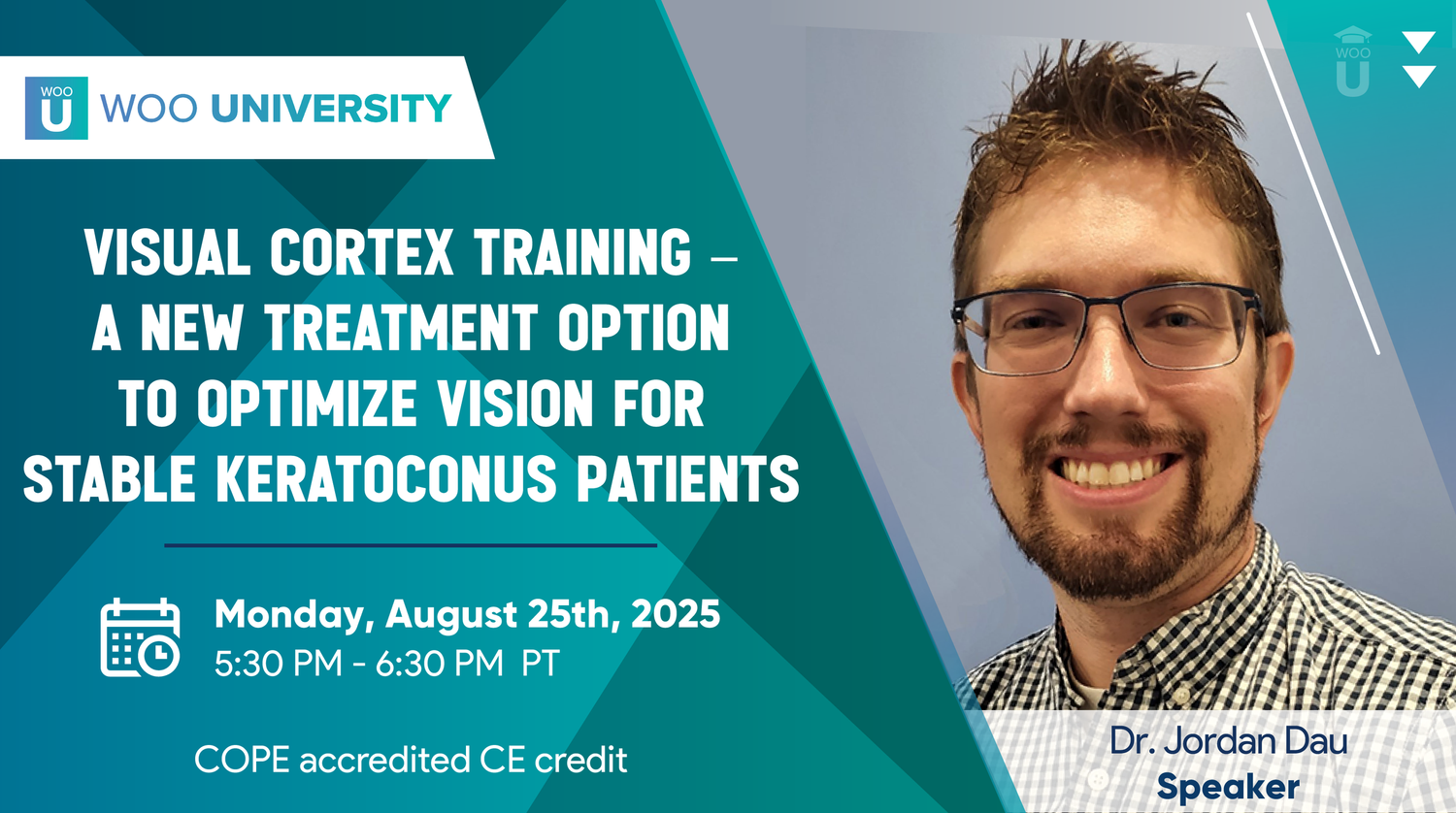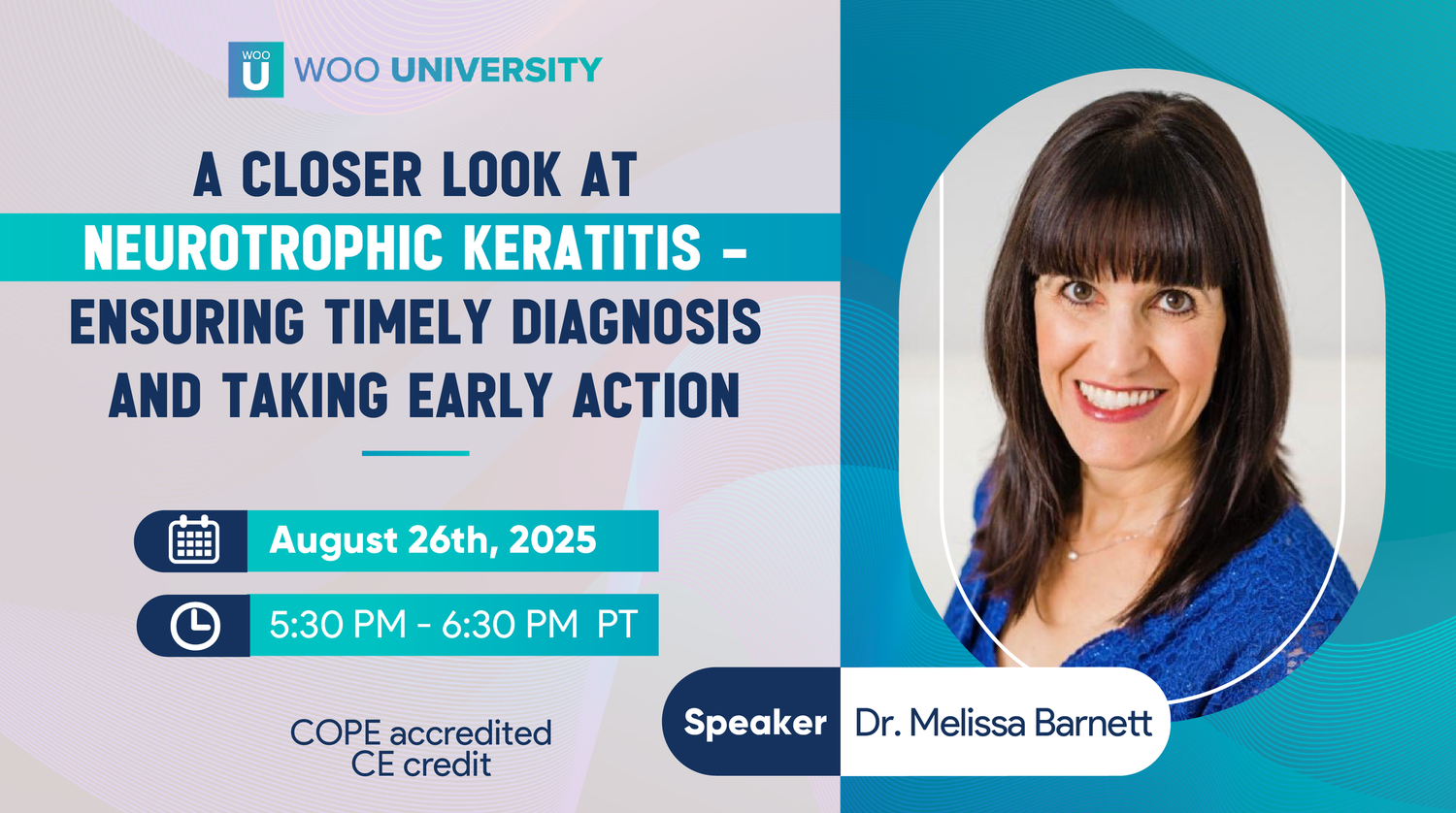Advances in Eye Care: Insights for Modern Optometric Practice
Keratoconus: Overview and Current Treatments with Dr. Barry Lee
Keratoconus isn't just a corneal issue — it's a quality-of-life issue. Even when patients retain relatively good visual acuity, the condition often leads to emotional distress, visual instability, and reduced stereopsis. These challenges can make everyday tasks such as driving at night, reading, or working on digital devices feel unpredictable and frustrating. Over time, that uncertainty can take a significant emotional toll, even on patients who appear to “see well” based on visual acuity alone.
Early diagnosis and patient education remain key. When patients understand the nature of their condition and the importance of consistent monitoring, they are more engaged and better prepared for long-term management. Corneal crosslinking is important, but it’s only one piece of the long-term care puzzle. Comprehensive management should include regular follow-up, specialty contact lens fitting, and support that addresses both the visual and emotional aspects of living with keratoconus.
In the Blink of An Eye: How Blinking Mechanics Impact Dry Eye Disease with Dr. Cory Lappin
We often overlook blinking as a dynamic contributor to ocular surface disease. In reality, our modern, screen-heavy lifestyles are quietly reshaping how the lids function and how the tear film behaves. Hours spent focusing on digital devices lead to incomplete or infrequent blinks, gradually disrupting the delicate balance that keeps the eyes comfortable and hydrated.
This session was a timely reminder that for many dry eye patients, treatment doesn’t begin with drops — it begins with the lids. By paying attention to blink behavior, encouraging proper lid hygiene, and retraining healthy blink patterns, clinicians can address one of the most fundamental — and often forgotten — aspects of ocular surface health.
Aesthetics in Optometry with Dr. Chantel Garcia
Patients today are seeking more than vision correction — they’re looking for confidence and aesthetic enhancement. This shift reflects a broader understanding that eye care isn’t just about seeing clearly, but also about feeling good and presenting oneself with confidence.
The session highlighted how integrating aesthetic services into optometric practice can elevate patient satisfaction and expand the role of the optometrist beyond traditional care. When done thoughtfully and supported by medical evidence, aesthetic treatments can seamlessly align beauty with ocular health — creating a holistic approach that benefits both vision and self-image.
Visual Cortex Training – A New Treatment Option to Optimize Vision for Stable Keratoconus Patients with Dr. Jordan Dau
Perceptual learning represents one of the most exciting developments in recent years for keratoconus patients who feel stuck, even after CXL, contact lenses, or surgery. This emerging approach focuses on the neural side of vision — training the brain to process visual information more effectively, even when the cornea has reached structural stability. By targeting the visual cortex, perceptual learning offers a new path toward functional improvement and enhanced quality of life for patients once considered “maxed out” on treatment options. It’s a promising reminder that vision optimization doesn’t end at the cornea — it continues in the brain.
A Closer Look at Neurotrophic Keratitis—Ensuring Timely Diagnosis and Taking Early Action with Dr. Melissa Barnett
This presentation served as an important reminder that neurotrophic keratitis is often missed in its early stages. Subtle clinical signs — such as persistent epithelial defects or a surprising absence of pain despite visible corneal damage — should always raise suspicion. These early red flags can easily be overlooked, yet they hold the key to timely intervention. The key takeaway was clear: when in doubt, test corneal sensitivity. Early diagnosis and prompt management can make the difference between full recovery and irreversible complications, underscoring the critical importance of vigilance in every corneal assessment.
Each of these topics — from keratoconus care and dry eye management to aesthetics, neurotrophic keratitis, and neural vision training — highlights the evolving scope of modern optometry. They remind us that great eye care isn’t just about clinical outcomes; it’s about improving how patients see, feel, and live.
If you found these insights valuable and want to deepen your clinical expertise, don’t miss our upcoming Continuing Education (CE) session — where we’ll explore these topics in more depth, share case studies, and discuss the latest advancements shaping the future of eye care.

